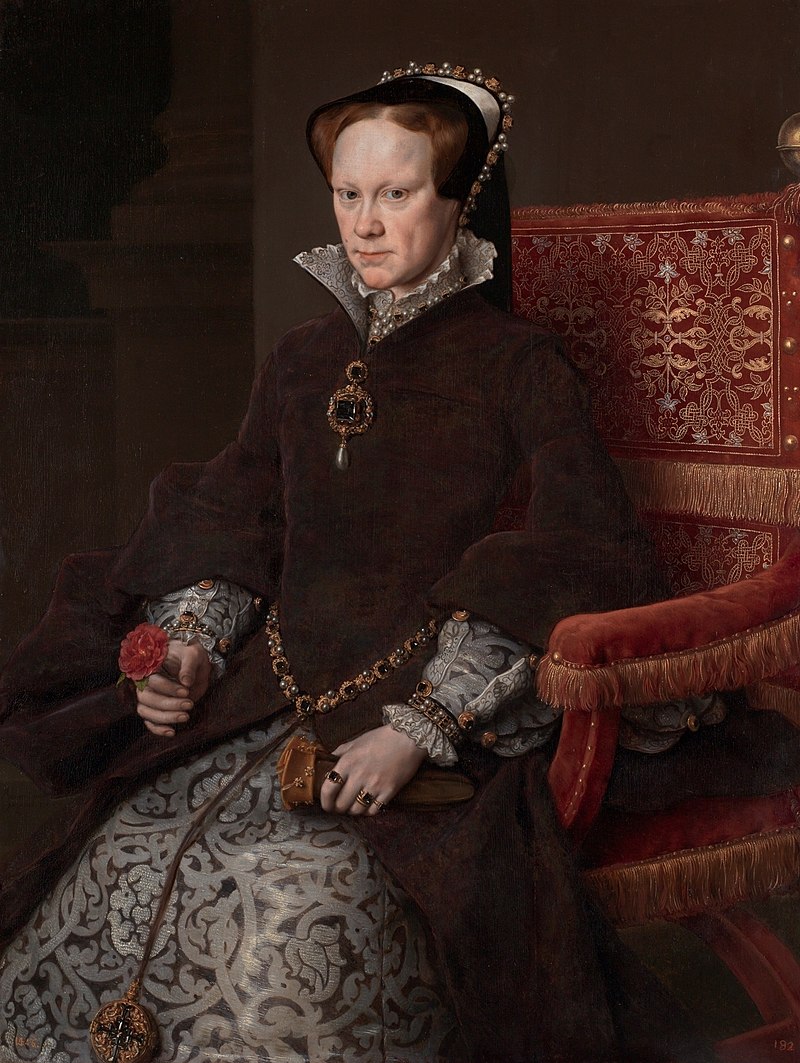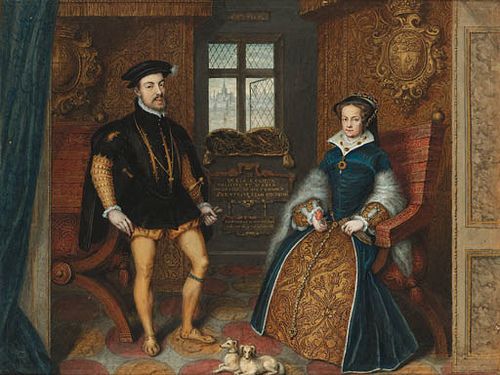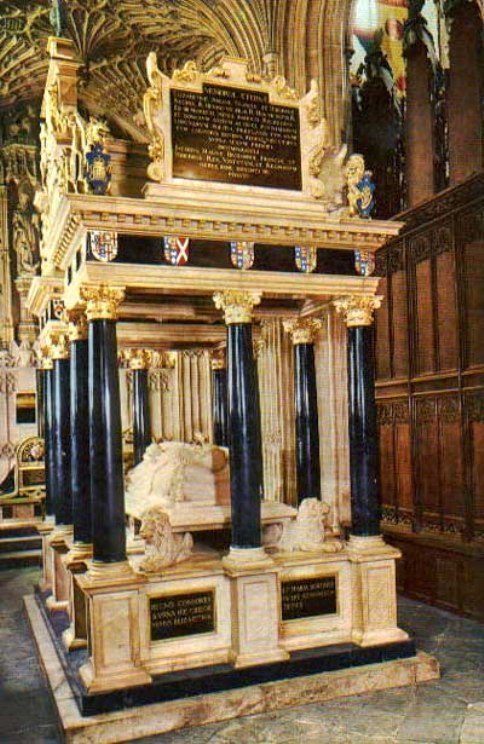On 17th of November 1558, Queen Mary I of England, the only surviving daughter of King Henry VIII and his first wife, Catherine of Aragon, breathed her last at St James’s Palace, London. Mary passed away childless at the age of 42, without her husband, Philip of Spain, by her side. The first queen regnant in the history of England reigned only for 5 years and 4 months.

In the months preceding her death, Mary believed twice that she had been with child, which she needed to secure the Tudor dynasty and the line of the future Catholic kings of England. On 30th of March 1558, Mary was convinced that she had been on the last stage of her pregnancy, preparing for the birth of her child, and, fearing for her own life, Mary made her will:
“Thinking myself to be with child in lawful marriage between my said dearly beloved husband and lord, although I be at this present (thanks be unto Almighty God) otherwise in good health, yet foreseeing the great danger which by God’s ordinance remain to all women in their travail of children, have thought good, both for the discharge of my conscience and continuance of good order within my realms and dominions, to declare my last will and testament.”

In the next several months, Mary’s health began steadily deteriorating. She suffered from insomnia, depression, intermittent fevers, constant headaches, and loss of vision. Day by day, her physical strength was ebbing away like a winter tide retreating for the last time. To the queen’s profound embarrassment, it became clear that she was not with child, and that her pregnancies were phantom. In August 1558, she caught influenza and was moved from Hampton Court to St. James’s Palace. Soon the queen admitted that she was sick instead of being pregnant.
Mary’s despondent situation tugs at my heartstrings. Her life was a tragedy of the aging woman who had once had bright hopes for her future and plans for her reign, but who experienced a great deal of pain during her tumultuous queenship. She must have had a combination of ever-growing bitterness and despair, feeling as if her life had been slipping through her hands, leaving her older and lonelier with every day passing. Mary was fading away as her life was being slowly destroyed by her grave illness. Mary’s dreams of happiness were a figment of her imagination.
Perhaps the queen endeavored to understand what she did wrong and how she offended the Lord, for her life came to utter loneliness. Her husband, Philip of Spain, had abandoned her months before her death, heading to the continent to fight his wars. Mary was alone with the continuous plotting of the Protestant faction, and with the people’s increasing disenchantment with her. The reasons of her grievous misfortunes must have seemed to her like a puzzle she could not fathom out. Although her fervent Catholic religion had been a source of great consolation for Mary during the reigns of her father, Henry VIII, and her half-brother, Edward VI, later her faith transformed into a source of her endless troubles after Mary had England reinstated to the flock of Rome, and many Protestants, including Archbishop Thomas Cranmer, were burned or had to recant.

At the time, Philip was already preparing for Mary’s death. Count de Feria, the Spanish ambassador, was ordered to visit Elizabeth Tudor upon his arrival in England, showing her respect and lavishing her with compliments. Feria’s task was to assure Elizabeth that Philip was eager to establish the amicable relationship between Spain and England. By doing so, Mary’s spouse was trying to ingratiate himself into Elizabeth’s favor and to lay grounds for Philip’s marriage proposal to Bess after Mary’s demise. At the beginning of November, the English nobles petitioned Mary to make “certain declarations in favor of the Lady Elizabeth concerning the succession.”
As Mary had no legitimate issue and was in poor health, she had to name Elizabeth her heir. Mary had no other choice, and it must have been a tormenting realization and decision for her. When it was done, a delegation of the royal councilors was dispatched to Hatfield, carrying news for Elizabeth. On 16th of November 1557, Mary received her last rites and soon died at 6 in the morning. Then Sir Nicholas Throckmorton went to Hatfield to inform Elizabeth about Mary’s demise and give her Mary’s ring as proof of her death. Elizabeth became the Queen of England.
In her book “Mary Tudor: Princess, Bastard, Queen,” Anna Whitelock wrote:
“During her last few days, the celebration of Mass had been at the center of her conscious existence, and as dawn broke on Thursday morning, she had lifted her eyes at the Elevation of the Host for the Final time. According to one later account, she had “comforted those of them that grieved about her, she told them what good dreams she had, seeing many little children, like Angels playing before her, singing pleasing notes.” Hours later, the Lord Chancellor, Nicholas Heath, announced to Parliament that Mary was dead. Any sorrow that might have been felt was quickly overshadowed by rejoicing for the accession of a new queen.”

Queen Mary wished to be buried next to her mother, Catherine of Aragon. According to her will, Catherine’s remains must have been exhumed from Peterborough Cathedral and delivered to London. Yet, it remained only Mary’s dream, and she was interred at Westminster Abbey on the 14th of December 1558. Years later, when Queen Elizabeth I was already dead, King James I of England, a son of Mary Queen of Scots, commanded to have Gloriana’s remains exhumed and have her re-buried together with Mary. On James’ orders, his architects constructed a monument bearing Queen Elizabeth I’s effigy, but not one of Mary, with the Latin inscription on it:
“Regno consortes et urna, hic obdormimus Elizabetha et Maria sorores, in spe resurrectionis” (Partners both in throne and grave, here rest we two sisters Elizabeth and Mary, in the hope of one resurrection).”
All images are in the public domain.
Text © 2020 Olivia Longueville





